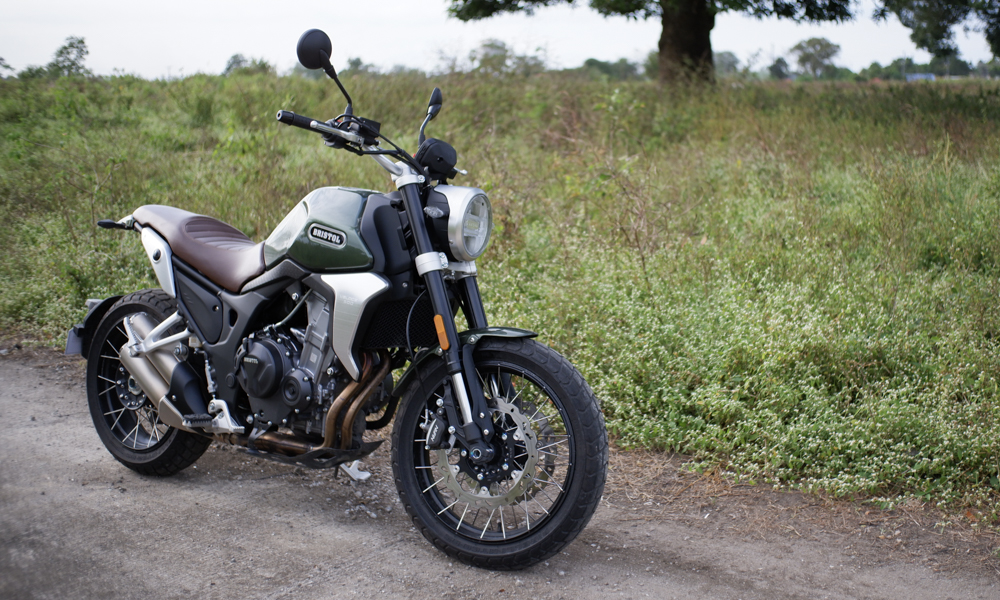
The motorcycle industry has evolved to a point where bikes can be made in several ways. The first is the long, established route. A manufacturer develops a bike from scratch, invests in the tooling particularly for the engine and the frame, then pulls together subcomponents for things like the electricals and the brakes in order to produce and market its very own product by the hundreds or the thousands. There’s the custom route, where a custom shop starts with a base bike (either old or fresh), tears it nearly all the way down to the frame and the engine, then proceeds to build it back up to the customer’s specifications (and which may or may not be reproduced by a handful).
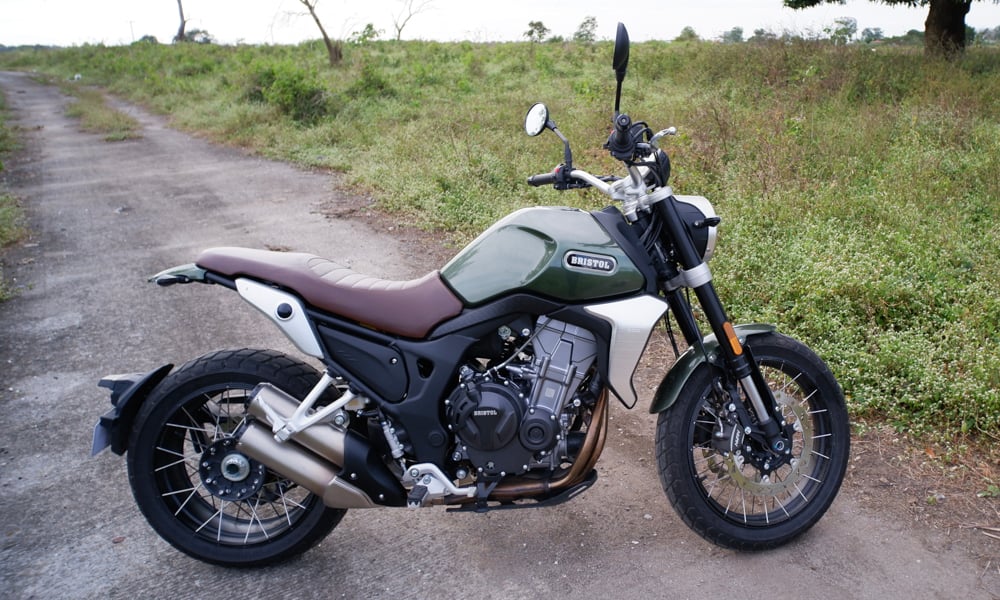
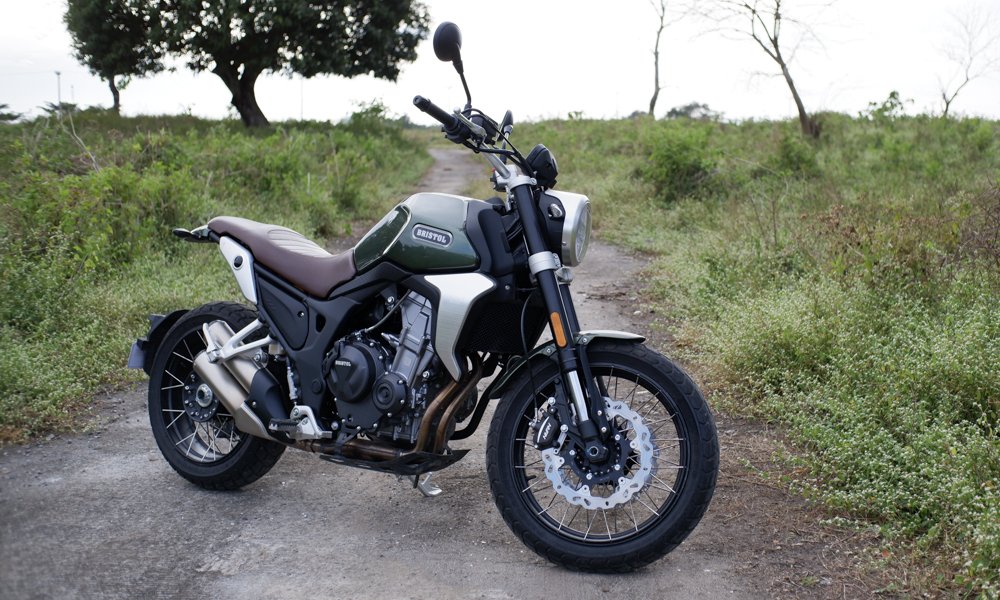
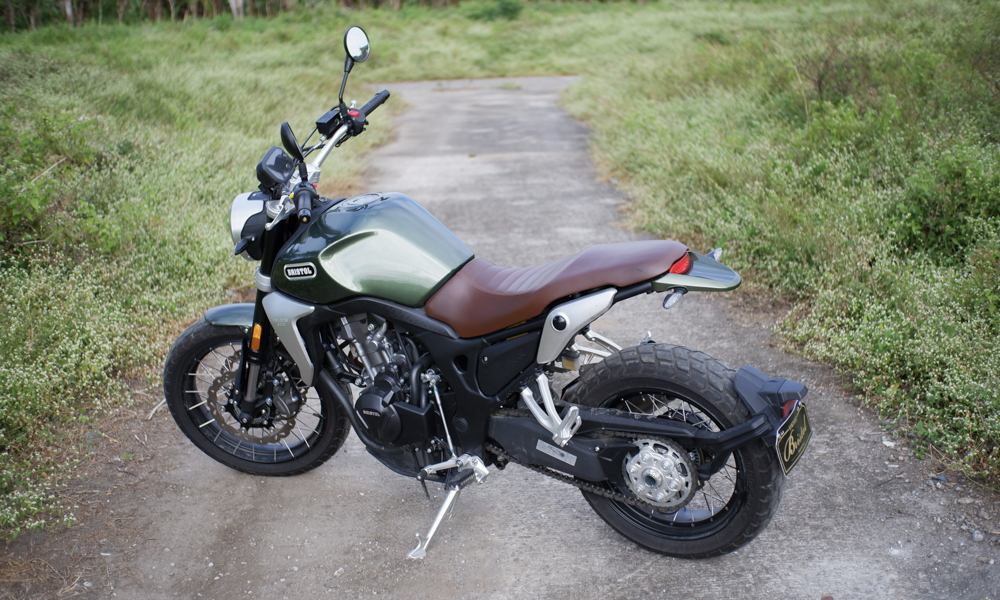
And finally, we have the boutique route: not quite full custom but not quite big manufacturer either. A company sources the parts from established suppliers in the motorcycle industry, then puts everything together according to local specifications in order to create and market a bike it can legitimately call its own.
Much of the R&D (which is probably the biggest expense in motorcycle development) is left to the supplier, and the company trusts that the parts it is ordering have already been tested. The remaining research and localization efforts are thus focused on the premise that (1) everything works as intended and (2) the local assembly is 100% top-notch and will not result in after-sales headaches. This sourcing of “pre-engineered” bikes is also practiced in other countries by various smaller brands, enabling them to put their own flavors and legitimately call these motorcycles their own.
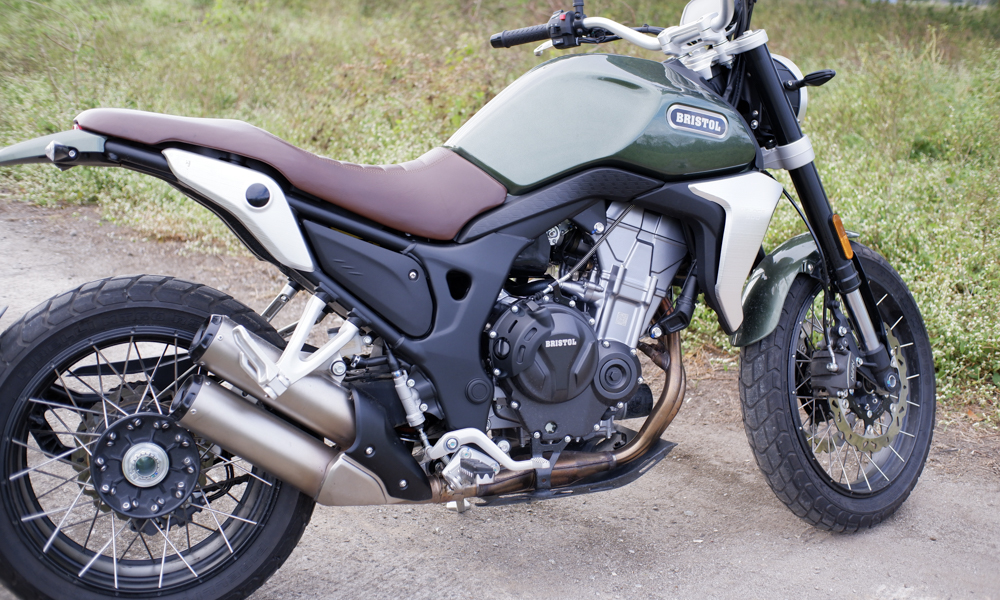
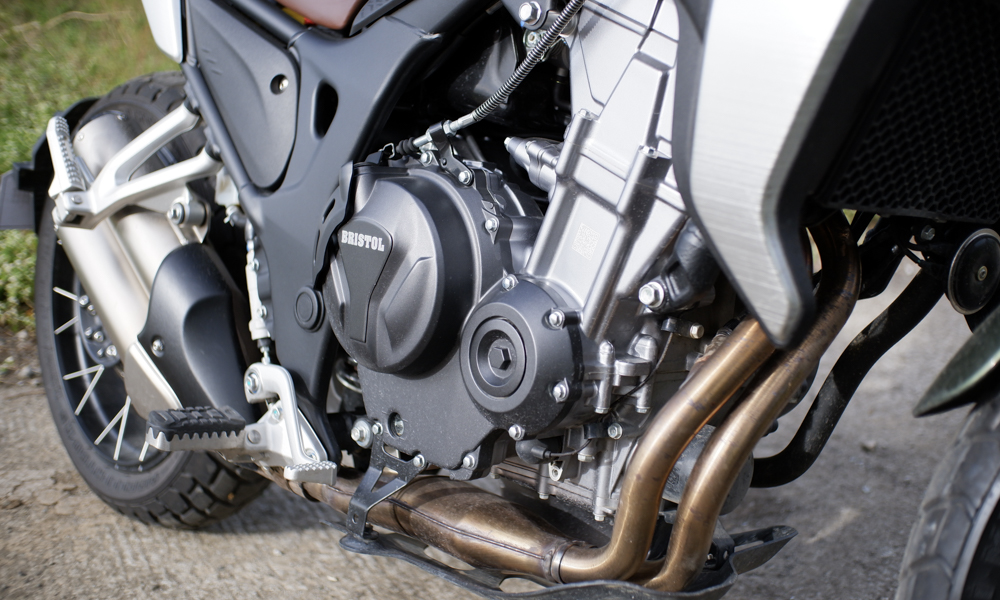
This is essentially the business model behind Bristol Motorcycles, the big-bike brand of Sinski Motorcycles—a Filipino distribution business that has been in operation since 2002. Bristol was launched with relatively modest fanfare in 2018, its first highway-legal bike being the Classic 400 café racer. The company followed that up with the Venturi 500 adventure bike a year later. The Veloce 500 is its roadster or “scrambler lite” model, and it honestly looks good.
The Veloce 500’s side profile bears some resemblance to the Honda CB650R, especially those polished aluminum side panels. But a walk-around reveals a faint resemblance to the Ducati Scrambler in the shape of the saddle, and a little bit of BMW R nineT with the tank and over/under exhaust pipes. Good points of inspiration, and after a while it begins to take on its own personality and “stick” in your memory. A closer look at the welds and the paint finish reveals a pleasing attention to detail, bar the questionable use of shiny silver paint on the handlebar.
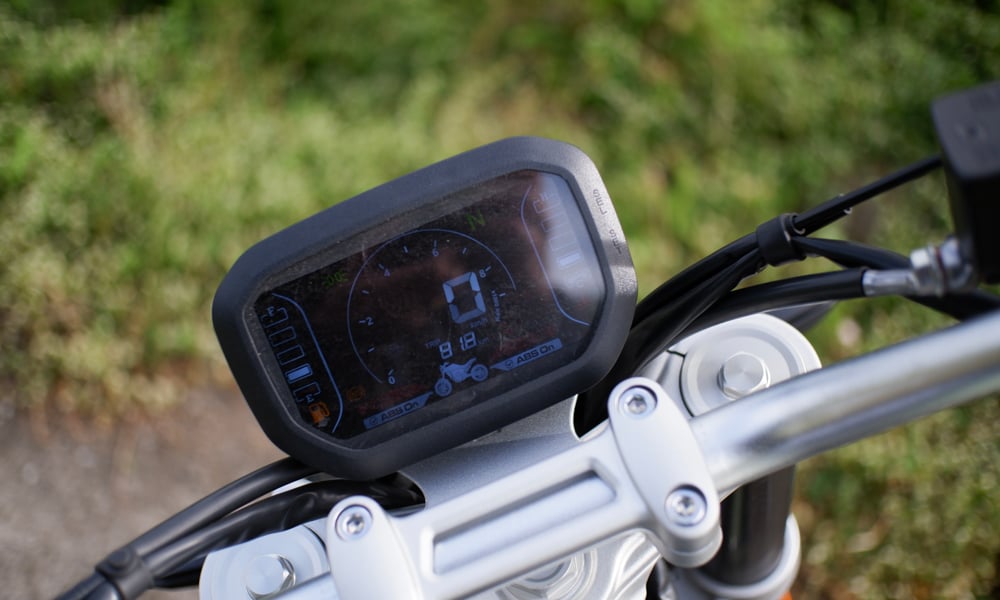
For P348,000, Bristol put together some impressive components to get buyers interested: 471cc parallel-twin engine with 47hp and a six-speed transmission (both by Loncin of China); Nissin brakes with dual-channel ABS that you can switch off; KYB suspension including a USD fork; spoked and tubeless wheel set with Pirelli MT-60 semi-knobby tires; and a Bosch EFI. The dual-beam, diamond-shaped frame even uses a sexy, single-sided swingarm.
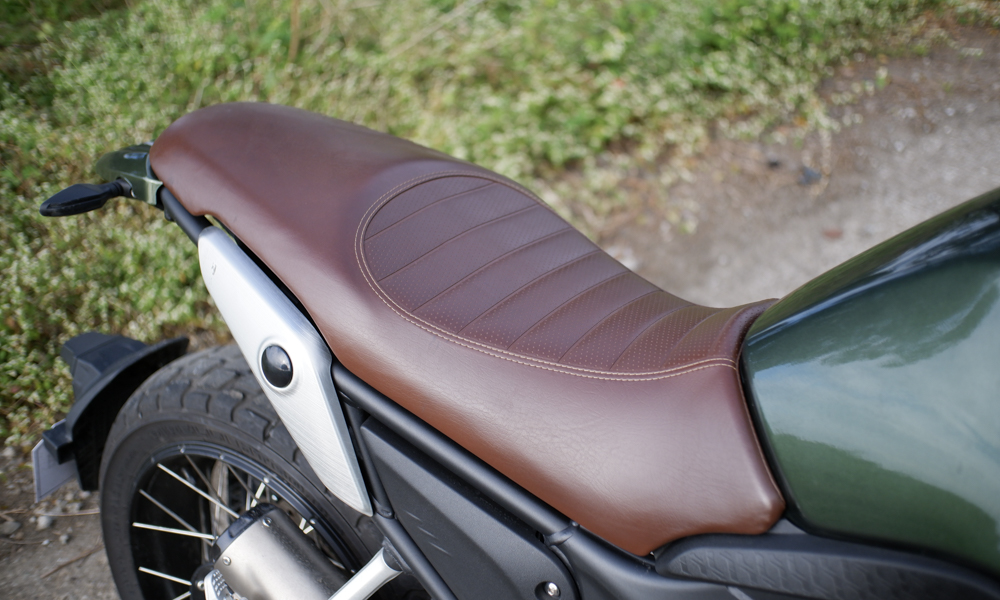
A bike needs to measure up to the sum of its parts on the road, so I took the demo unit over several days of urban, rural and highway riding. Settle into the saddle and your bum immediately appreciates the plush, thickly padded and well-shaped seat. The seat height is just 760mm, making it possible to flat-foot on both sides. The raised handlebars do give you the feeling that you’re using a mini-ape setup, but you get used to it after a while. No surprises with the conventional switchgear, which is no better or worse than what you’d find on a Japanese bike.
Start the engine and it comes to life with a muffled growl. It has a very hushed burble in the 2,000-4,000rpm range, only getting buzzy past that and into the 8,500rpm redline. Most of the torque is made between 2,000-6,500rpm anyway, so you’ll rarely ever need to rev it high. The water-cooled unit sits nice and tidy in the frame, and there’s no mess of ugly pipes and wires so common among the type.
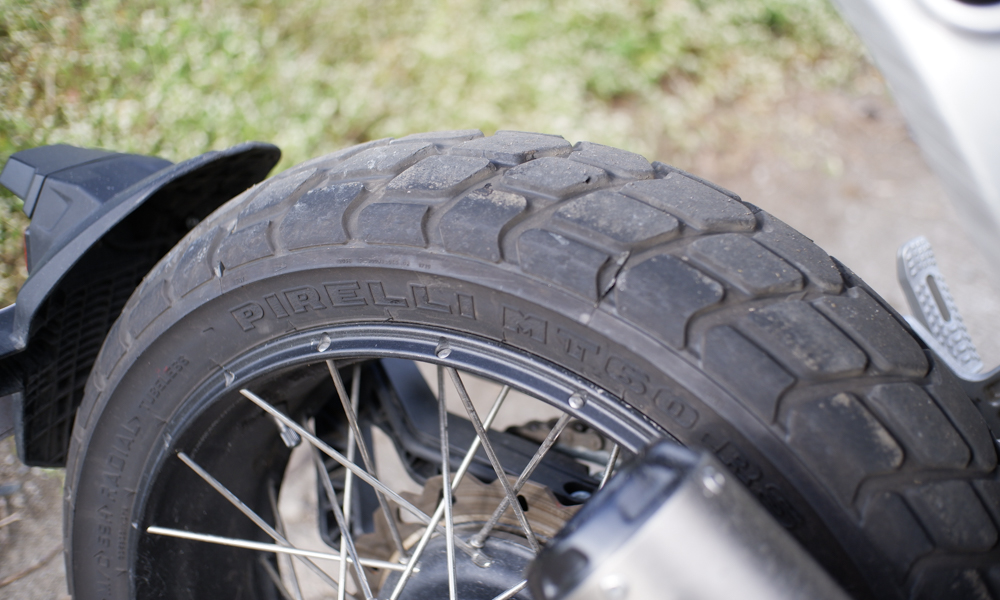
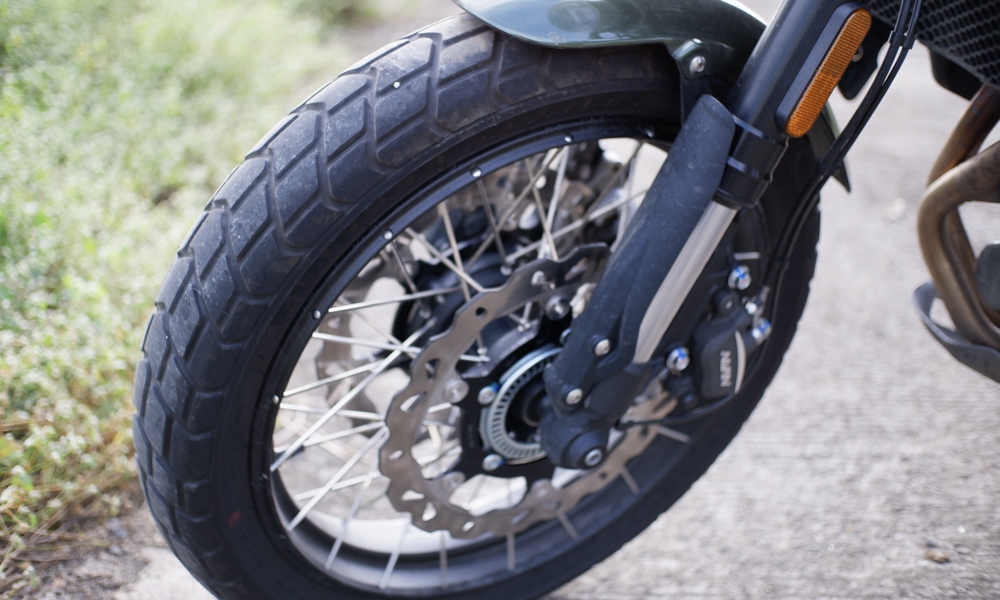
On the expressway, the Veloce has a relaxed, cruiser-like demeanor about it that gobbles up the miles and doesn’t particularly goad you into warp speed. While its light 185kg curb weight and short 1,460mm wheelbase encourage sporty handling, you need to get over the initial squirm of the Pirelli tread blocks as you lean the bike over. Past that quirk, you can make good time on a twisty road. The 18-liter tank and fuel efficiency in the 23-25km/L range give you a usable endurance of around 315km before you hit the reserves.
Between the tautness of the KYB shocks and the chunky tread of the Pirellis, the bike has a ride that could be a little softer so it absorbs road imperfections rather than just bouncing over every rut and bump. Stopping power from the Nissin brakes is commendable and easy to modulate. Apart from the mild engine vibrations, the bike feels solidly put together.
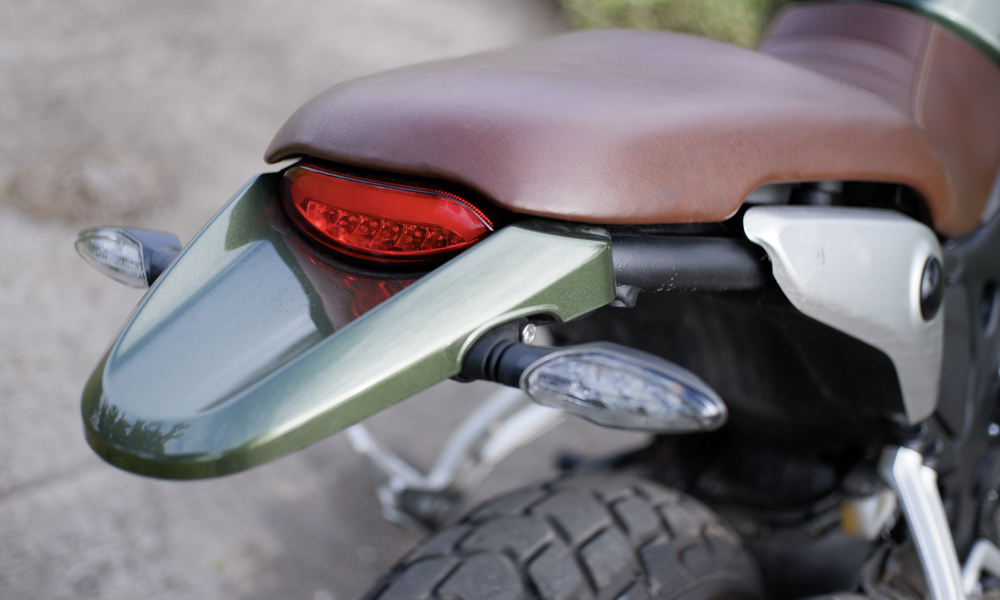
So far, so good, but there are a few proverbial flies in the ointment. One is the nonadjustable digital display, which looks attractive at night but nearly washes out during the day. There’s the snatchy throttle pick-up, which tends to induce a whiskey throttle moment every time you crack it open in stop-and-go. Without the aid of a slipper clutch, you’ll need to induce a lot of clutch slip to have a smooth acceleration. Or use a higher gear like third to reduce the torque in low-speed traffic.
Finally, the seat-to-peg distance from the lowest part of the saddle is a little cramped if you’re on the taller side of riders. At 5’8” with a 31-inch inseam, I had to move back a few inches on the slope of the saddle for more comfort, but this presented its own ergonomic problems. More petite riders should have no issues with this, but best to actually sit on the bike and see if the fit works for you.
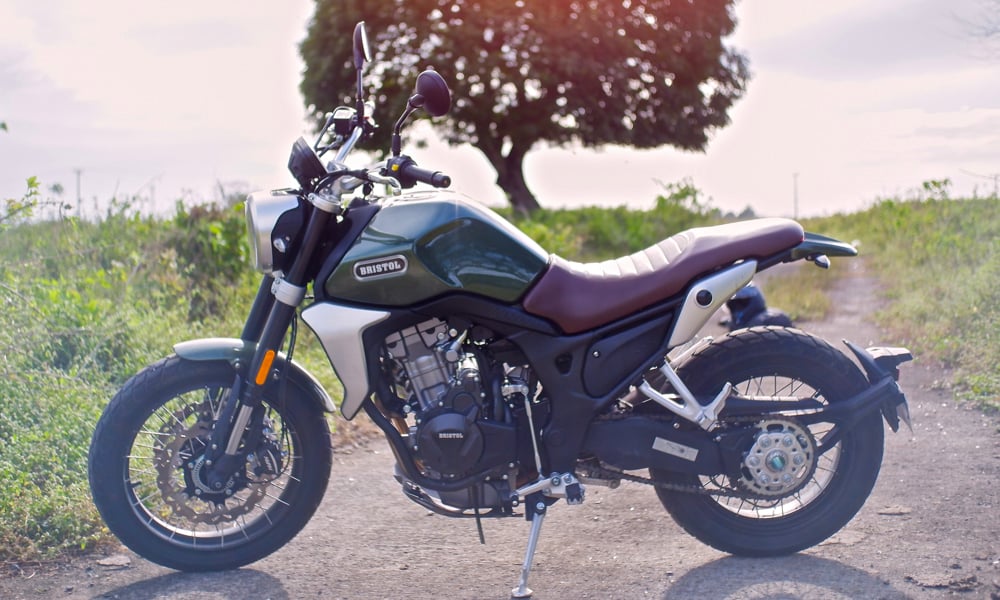
A few rough edges aside, these are forgivable considering how much bike you get for the money. At its price range, you get a mid-capacity engine with serious supporting hardware, and it all looks good and well put-together. Bristol backs up its products with a one-year warranty and a home-service “rescue” program, too.
Can this bike stand the test of time versus other (and more established) players? It’s too early to say, but judging from the brisk sales reported by Bristol since it launched the Veloce, enough people are willing to give it a shot and support the business.


0 Comments